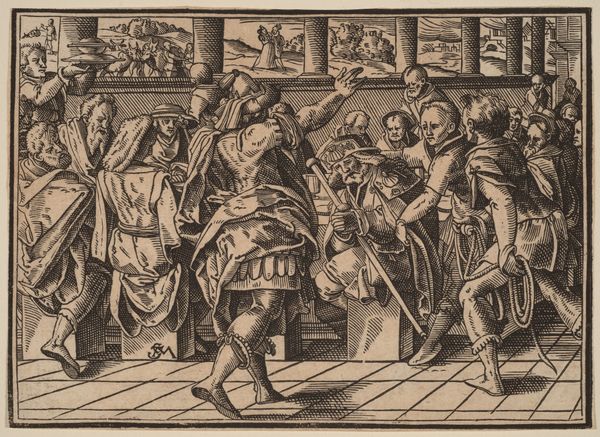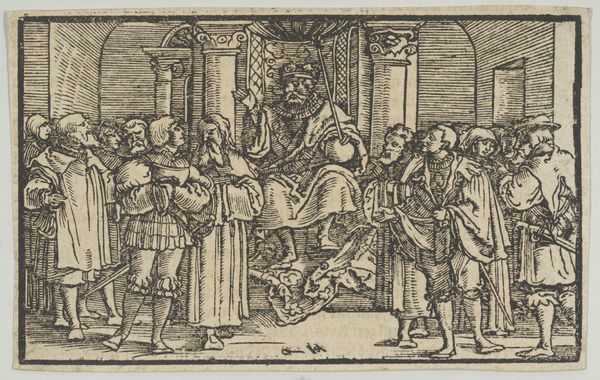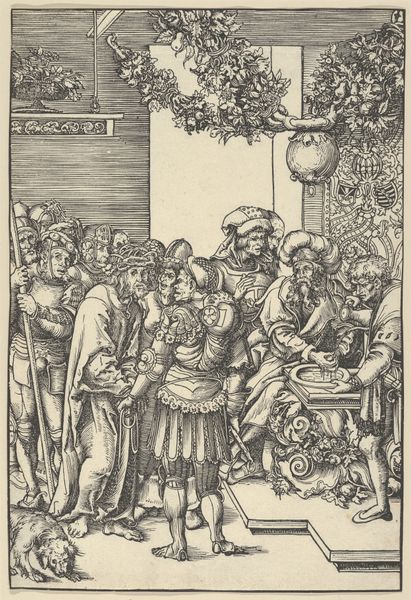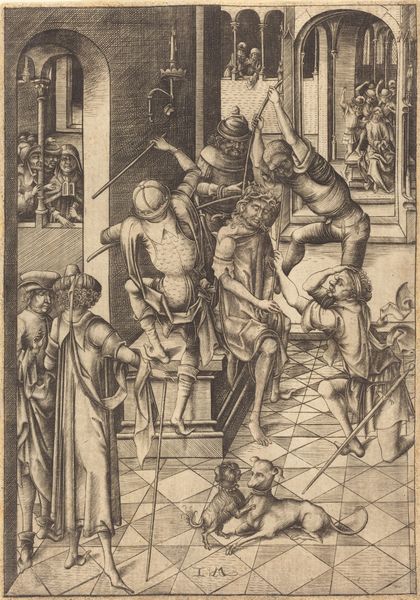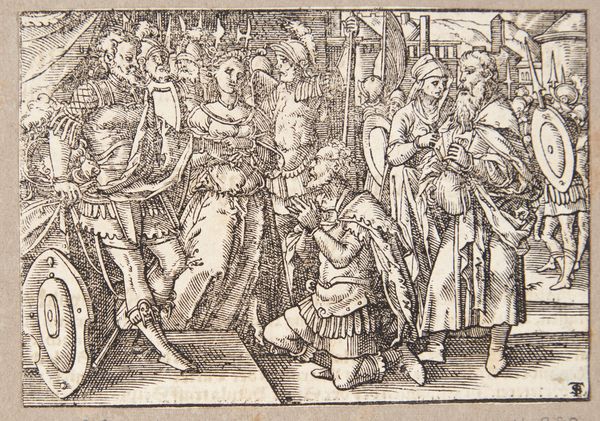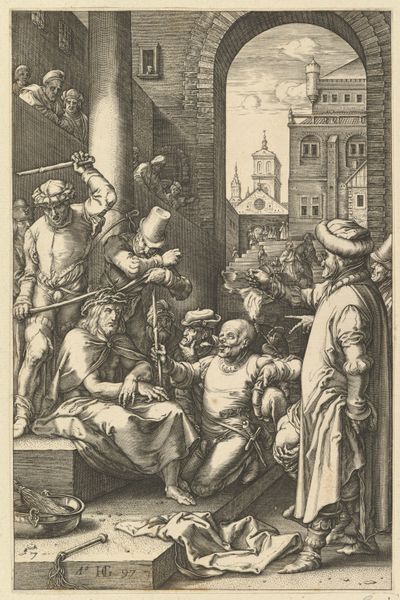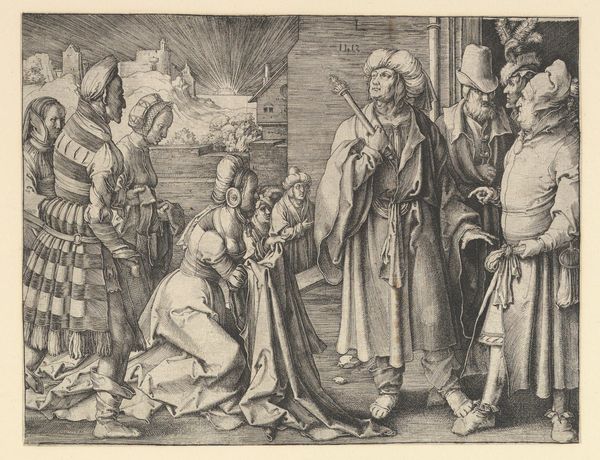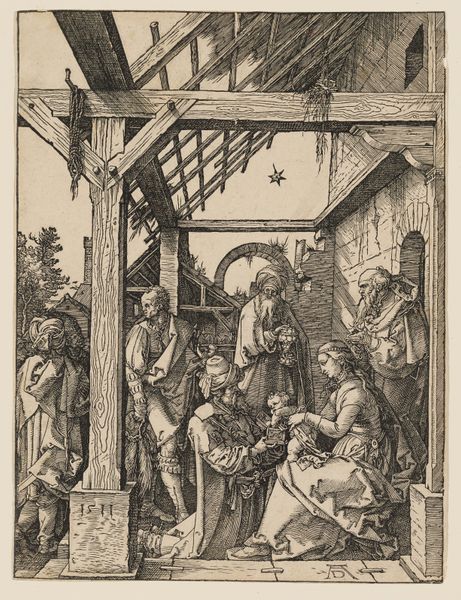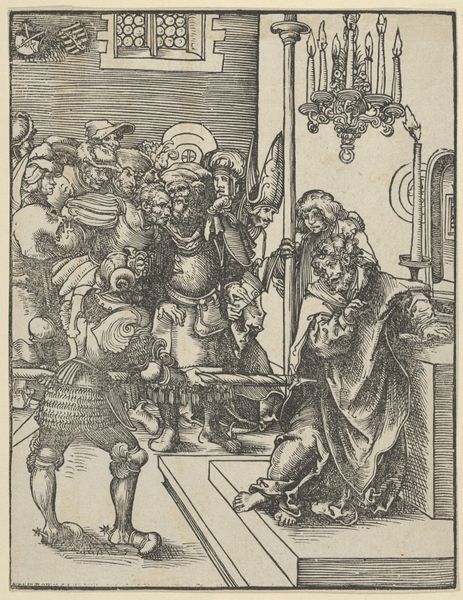
drawing, print, engraving
#
drawing
# print
#
figuration
#
11_renaissance
#
genre-painting
#
northern-renaissance
#
engraving
Dimensions: Sheet: 11 1/2 × 16 1/4 in. (29.2 × 41.3 cm)
Copyright: Public Domain
Editor: This is "Musicians and Onlookers," a black-and-white engraving by Hans Schäufelein, created sometime between 1500 and 1540. There's almost a starkness to it with all of its lines. What strikes me most is the depiction of these lavishly dressed people against, what appears to be, an outdoor space. How do you read this print? Curator: It's fascinating to consider the economic conditions required to produce a work like this, especially focusing on the relationship between the materials and the consumer. Who had access to engravings, and how did this influence Schäufelein's work? Think about the paper itself, the ink, the tools needed for engraving - they all point to a very specific patronage. Editor: That’s a great point. It definitely speaks to the accessibility of art. Were prints more widely available than paintings at that time? Curator: Exactly! Consider this engraving as a commodity in itself. Prints allowed for wider distribution and therefore broader consumption. This challenges traditional notions of artistic uniqueness and value. It forces us to consider the social context: Who could afford such a piece, and what kind of statement did it make to own one? Were these circulated amongst the wealthy, almost as visual signals of their class and taste? Editor: So, you're suggesting that this isn’t just an image of musicians, but also an artifact embedded within a complex network of economic and social exchange? Curator: Precisely. The level of detail shows technical mastery, but we also have to consider the societal factors. Looking at how the image itself becomes a form of capital. By exploring the materials, labor, and mode of distribution, we unlock the image’s broader cultural significance. Editor: I never thought of it that way. I see the engraving not just as a picture, but as a piece of social history itself. Curator: Indeed, understanding the material conditions helps us appreciate how art like this actively participated in shaping Renaissance society.
Comments
No comments
Be the first to comment and join the conversation on the ultimate creative platform.


